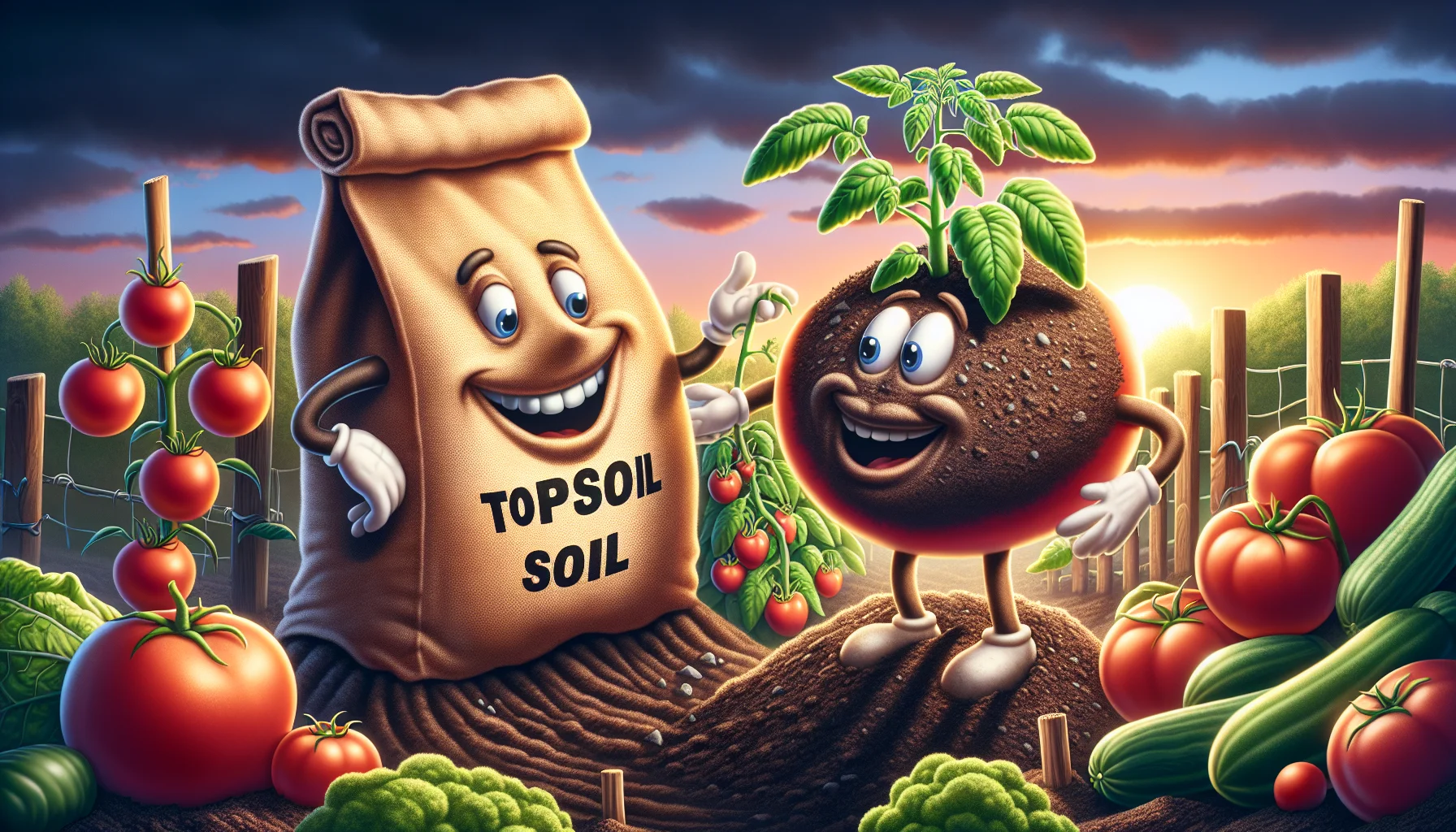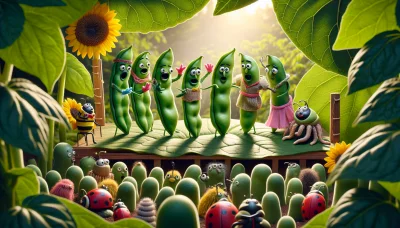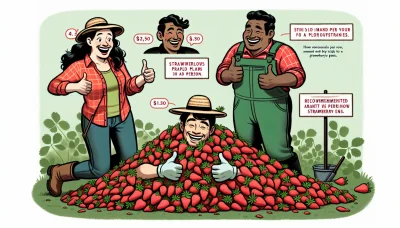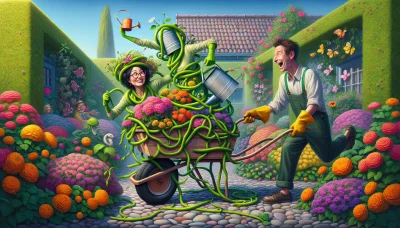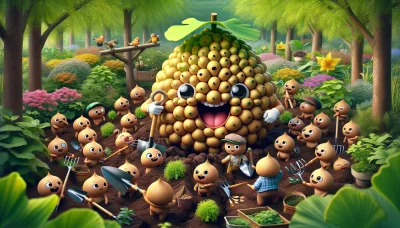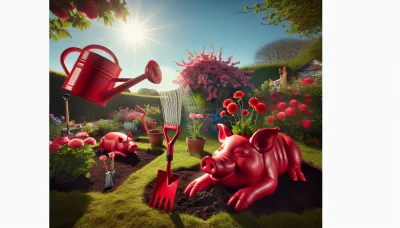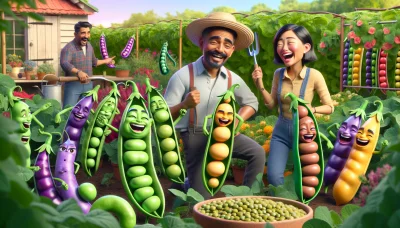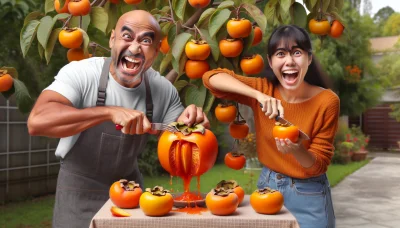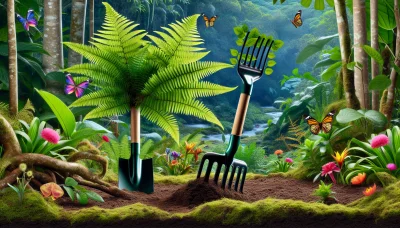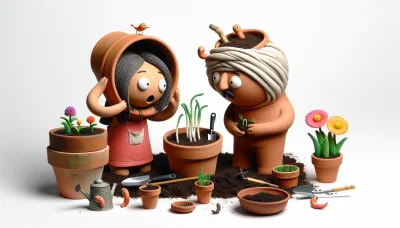Topsoil vs garden soil Quiz
Test Your Knowledge
Question of
Topsoil vs Garden Soil: Understanding the Difference
Soil plays a crucial role in gardening, serving as the foundation for plant growth. It provides essential nutrients, water, and support to plants, enabling them to flourish. Understanding the differences between soil types, such as topsoil and garden soil, is key to creating the right environment for your garden to thrive.
What is Topsoil?
Topsoil refers to the uppermost layer of soil, which is typically the first 5-10 inches. This layer is rich in organic matter and nutrients, making it extremely fertile and ideal for growing plants. It is composed of a mixture of mineral particles, organic matter, water, and air, which together create a hospitable environment for various forms of plant life. In gardening, topsoil is used to improve the soil structure, increase nutrient levels, and enhance moisture retention. The addition of topsoil can significantly benefit plant growth, yield, and health, making it a fundamental component for gardeners and landscapers alike. Its ability to support a diverse microbial ecosystem also contributes to the health of the garden by aiding in the breakdown of organic matter and the cycling of nutrients.
What is Garden Soil?
Garden soil is a rich, organic material that serves as the foundation for growing plants, vegetables, and flowers. It is typically composed of a blend of decomposed plant matter, minerals, and beneficial microorganisms that provide essential nutrients to plants. The purpose of garden soil is to support plant life by offering a stable, nutrient-rich environment that promotes healthy root growth and optimizes water retention and drainage. For gardeners, the advantages of using garden soil include improved plant health and yield, reduced need for chemical fertilizers, and enhanced natural resistance to pests and diseases. By choosing the right garden soil, gardeners can ensure their gardens are vibrant, productive, and sustainable.
Key Differences Between Topsoil and Garden Soil
- Composition: Topsoil is primarily composed of sand, silt, and clay in varying proportions, whereas garden soil is a mixture of topsoil and other organic matter, like compost and peat moss, to enrich the nutrient content.
- Texture: Topsoil tends to have a more variable texture depending on its source, while garden soil is specifically formulated to have a consistent, fine texture that is ideal for plant roots.
- Use: Topsoil is often used to create or improve the uppermost layer of soil in gardens and lawns, providing a base for planting. Garden soil, however, is best used for raised beds and container gardens where soil conditions need to be closely controlled.
- Nutrient Content: Garden soil is typically richer in nutrients and organic matter due to the added compost and other materials, making it more suitable for supporting plant growth. Topsoil, without amendment, may not provide the same level of nutrients.
- Drainage: The added organic matter in garden soil improves its drainage and aeration, which are crucial for healthy root development. Topsoil's drainage capabilities can vary widely and may need adjustment to support specific plant needs.
- Price: Garden soil usually costs more than topsoil because of the added nutrients and organic materials. Topsoil is often sold in larger quantities and may be more economical for large-scale landscaping projects.
How to Choose the Right Soil for Your Garden
Selecting the appropriate soil for your garden is crucial for the health and growth of your plants. The right type of soil depends on the plants you wish to grow. For vegetables and fruits, a loamy soil rich in organic matter is ideal as it holds moisture well and has good drainage. Succulents and cacti prefer sandy soil that drains quickly. If you're planting flowers, the specific needs vary by species, but many thrive in slightly acidic to neutral pH soil. It's also important to consider the soil's texture and nutrient content. Testing your garden's soil can provide valuable information on what amendments it might need to support your gardening plans. Remember, investing time in choosing and preparing the right soil can lead to a flourishing garden.
Mixing Topsoil and Garden Soil
Mixing topsoil and garden soil is a beneficial practice for gardeners looking to enhance the health and productivity of their gardens. This method combines the best of both worlds: topsoil, which provides a stable foundation with its dense, nutrient-rich composition, and garden soil, which is typically lighter and contains organic matter that improves drainage and aeration. The mixture creates an optimal growing environment for a wide range of plants, from vegetables to flowers, by balancing moisture retention with proper drainage, and by providing essential nutrients and a supportive structure for root development. To achieve the best results, gardeners should aim for a mix that suits the specific needs of their plants, adjusting the ratio of topsoil to garden soil based on the plant's requirements for drainage, nutrient levels, and pH balance.
FAQs on Topsoil and Garden Soil
| Question | Answer |
|---|---|
| What is the difference between topsoil and garden soil? | Topsoil is the uppermost layer of soil, providing nutrients for plants. Garden soil is a blend of topsoil and other components like compost, designed to optimize plant growth in gardens and containers. |
| Can I use topsoil in pots? | While you can use topsoil in pots, it's better to use a potting mix or garden soil designed for containers to ensure proper drainage and aeration for plant roots. |
| How do I improve poor garden soil? | Improving garden soil can involve adding organic matter like compost, manure, or leaf mold, which enhances soil structure, nutrient content, and water retention. |
| Should I remove old topsoil before adding new topsoil? | It's not always necessary to remove old topsoil unless it's contaminated or of very poor quality. Instead, you can improve it by mixing in compost or other organic materials. |
| How often should I replace the soil in my garden beds? | Soil in garden beds doesn't typically need to be completely replaced. Regularly adding organic matter and rotating crops can keep the soil healthy and productive for years. |
